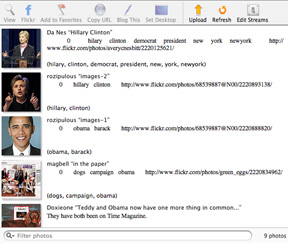I am guessing most readers have no idea what HyperCard is (actually was). For many of us, HyperCard was the beginning of many things. It was the beginning of hypermedia and multimedia authoring. It was often the beginning of scripting. HyperCard was very powerful. Perhaps you have heard of the graphics-intensive game Myst – originally a hypercard project created by the Miller brothers. I created projects in HyperCard I have been unable to duplicate as I have moved to other languages and delivery systems.
One of our first student projects consisted of individual images created by young students in KidPix. We extracted the audio, pasted the image on Hypercard cards and embedded the audio. I wrote a simple script attached to each card that moved the viewer on to the next card after a specified delay allowing the audio to be played. As far as I kow, it was an automated slide show that predated KidPix slideshow and any other program of that type. I still remember the first time we showed the student work at a parents’ night. We ran it on the largest TV monitor we could find. None of the adults had seen such a thing before.
I have heard rumors for years that HyperCard was going to make a comeback. It really never has. However, a new online app (tilestack) allows the creation of Hypercard-like stacks. I have created a small stack with their system to offer a simple example. TileStack is such a close relative of hypercard you can upload old hypercard stacks and it will convert them.
If you are not familiar with HyperCard, tilestack operates something like HyperStudio (now back in production via MacKiev) or perhaps products from eZedia (e.g., QTI). There have always been features I missed. For example, HyperCard functioned based on the selection of elements (buttons, fields, etc.), but also made available a powerful scripting language. I think I threw away the collection of manuals on hypertalk the last time I made room in my bookcase.
I wonder how I would do that. I have old stacks on 3.5 disks. I may have to fire up an old machine just to give the conversion program a try.
TileStack is under development. Many of the commands exist, but have “yet to be implemented”. I am not certain if you can try this out at this time. I read about the venture and put my name on the waiting list. I was notified by email that I had access. It appears the developers have big plans and many features are still in the works. I hope this venture makes it and people give it a try. Hypercard deserves a better fate than to fade into oblivion under piles of paper in one of my file cabinets on disks that no computer can now read.
BTW – Ketchikan is spelled correctly. I am not certain why it shows as a spelling error.
24 total views



